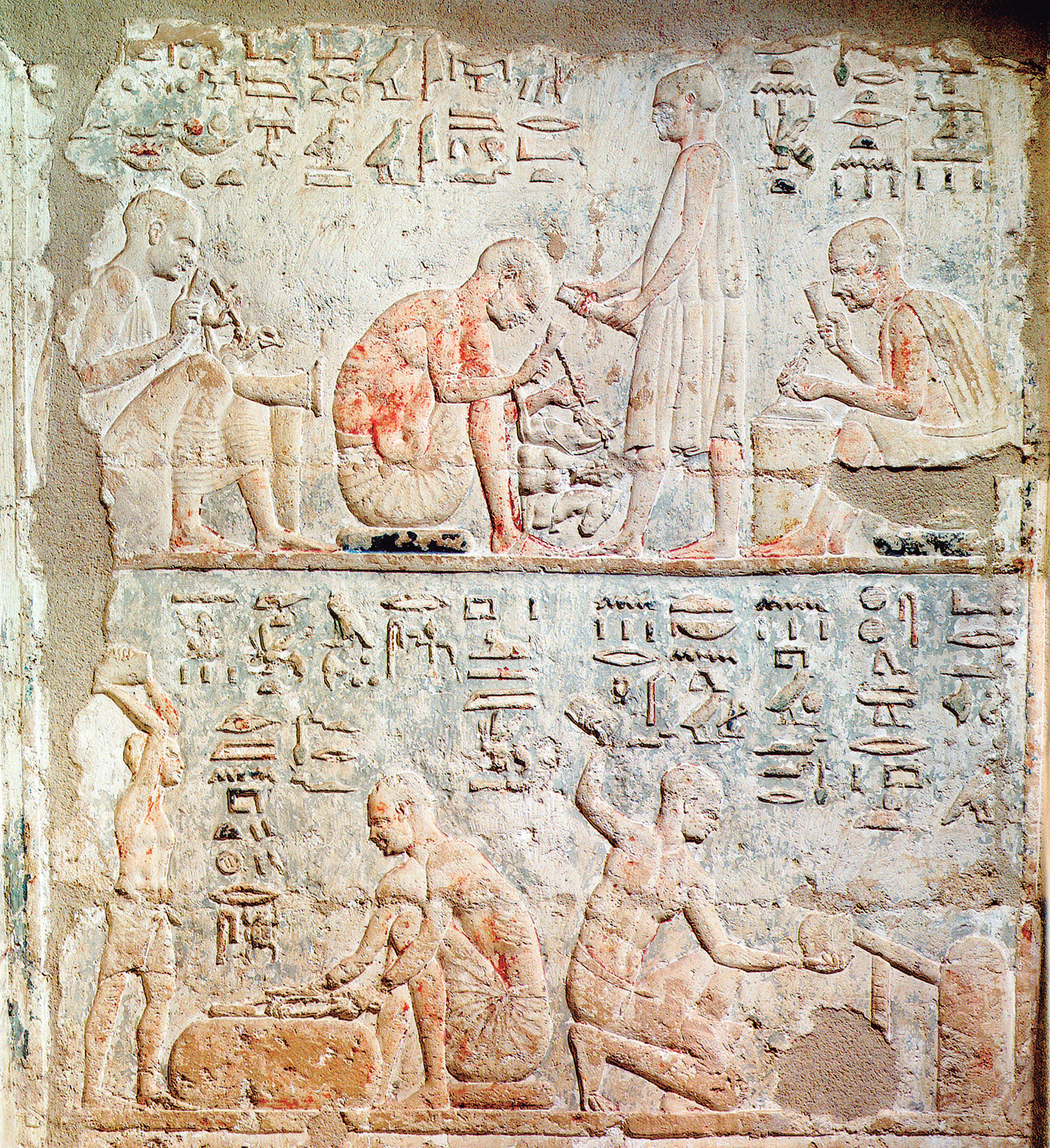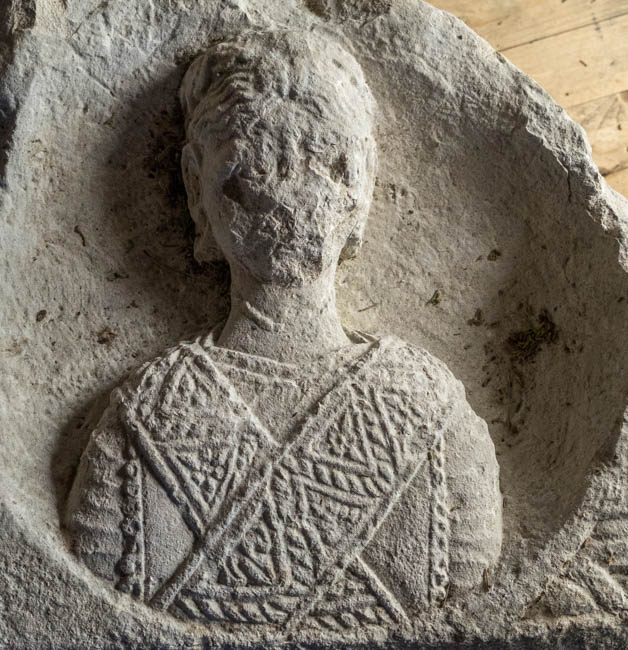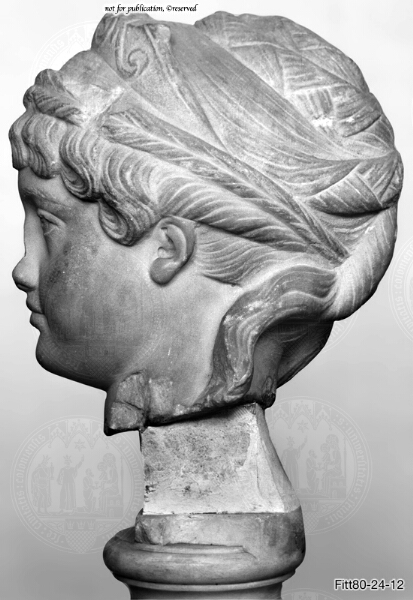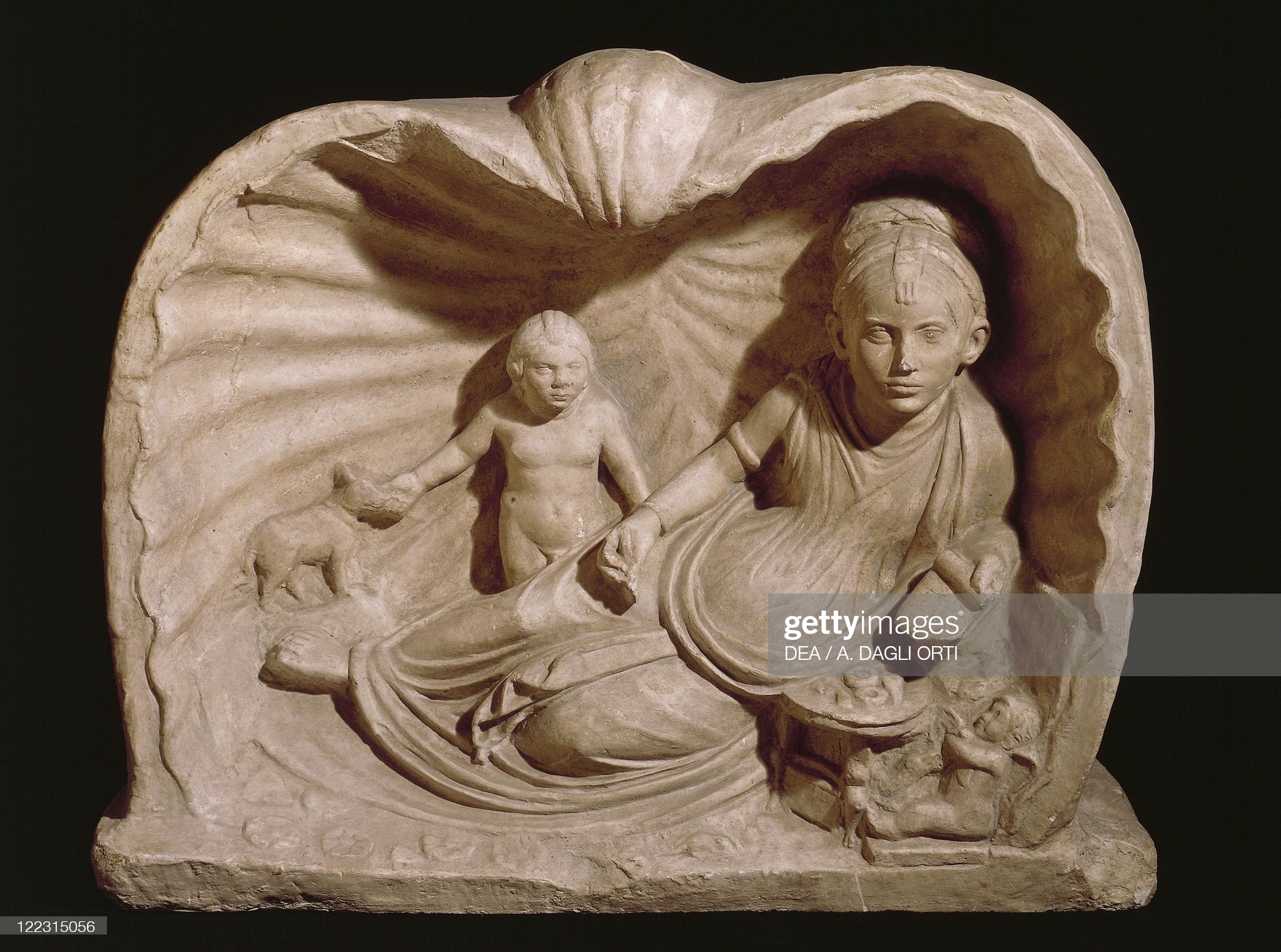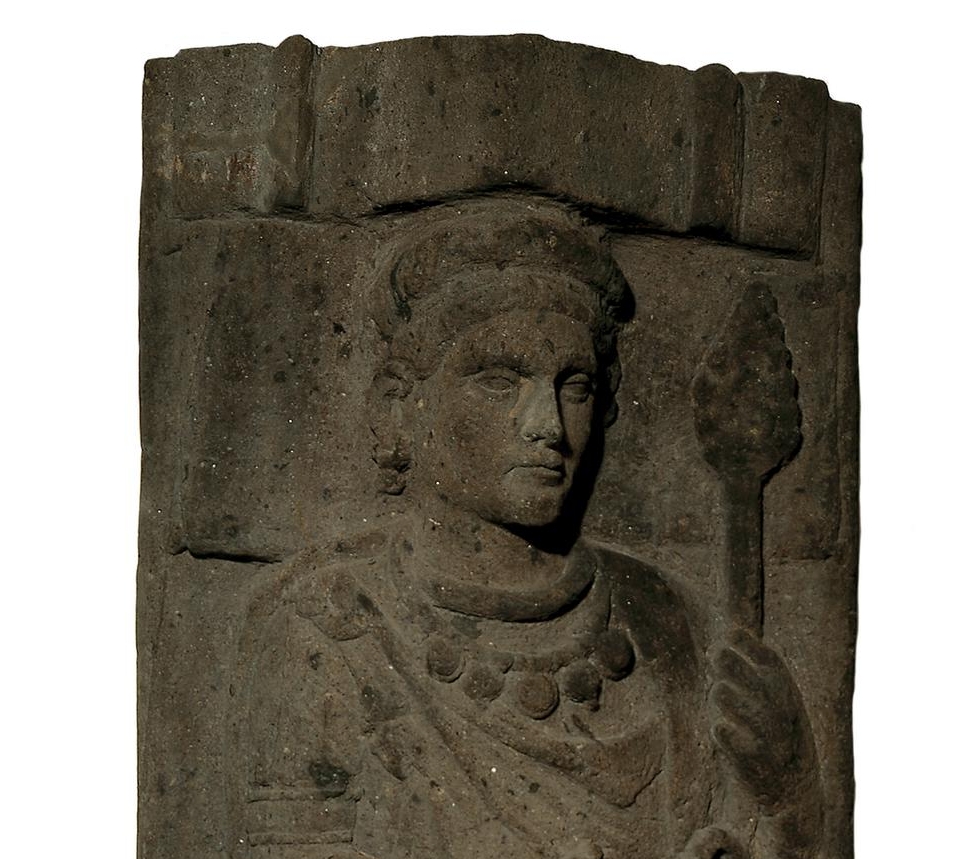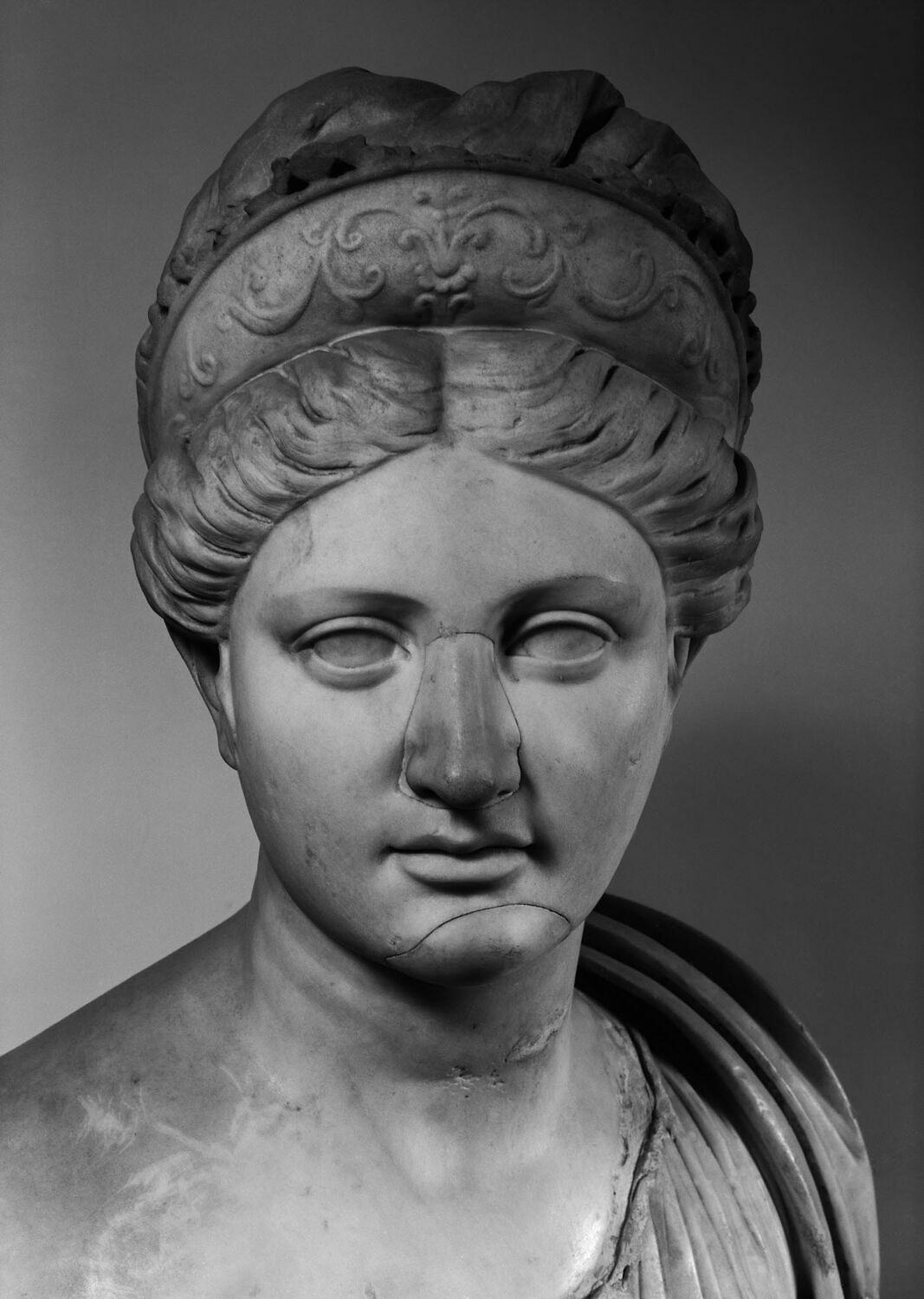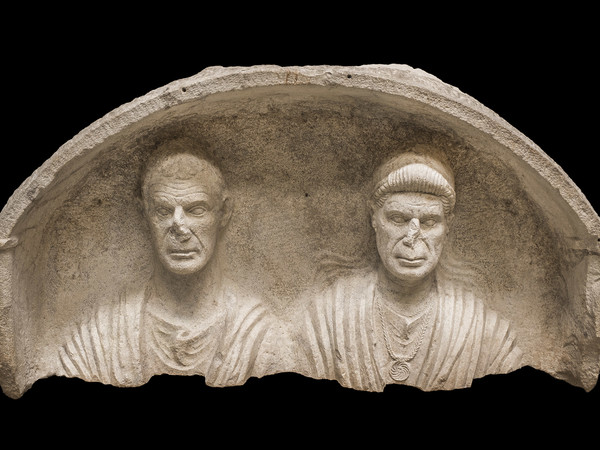
Stele with a married [???] couple, the end of the 1st century; limestone, 54 x 105 x 35 cm Museo Archeologico Nazionale di Aquileia | Foto © Gianluca Baronchelli
[Horus lock]
Description from the article “Sorelle, spose, madri. Il mondo al femminile nei monumenti funerari di Aquileia” by Annalisa Giovannini and Paola Ventura https://www.archeocartafvg.it/wp-content/uploads/Sorelle_spose_madri_Il_mondo_al_femminile-nei-monumenti-funerari-di-Aquileia.pdf
“The stele with a simple niche with an arched profile, found in the burial site of Beligna, south of the city, in 1895, belonged to a married couple whose names are unknown, after the loss of the epigraphic mirror (figs. 18 and 19 ). The woman shows an Octavia or Nodusfrisur hairstyle enriched with long, slightly wavy locks on the shoulders, unrelated to the canonical type and rather pertinent to a sort of well-attested updating in private contexts. For the type of processing one gets the impression that they are a later addition: this is not surprising given that the use of this hairstyle has been prolonged, with numerous variations, at least up to the first twenty years of the 1st century AD, especially by of older women, as she shows to have been the anonymous of this stele, with a deeply marked face. The dating proposed so far to the last quarter or to the end of the first century BC it should thus be revised and lowered. The woman wears a double-wrap necklace, the first to follow the hem of the stole, the second falling on the chest: the care taken makes it possible to detect how the sweater falls into the type of double bow in a bow, loop-in-loop, or rather formed by a series continuous of two rings gradually inserted into the previous two, then subjected to a light hammering that gives the characteristic appearance of braid90. On it there is a circular pendant, with a large hook, decorated with a spiral motif that develops from a central point: the references lead to those which, however, are firmnesses of chains, decorated in a radial pattern, from the Vesuvian cities.”



